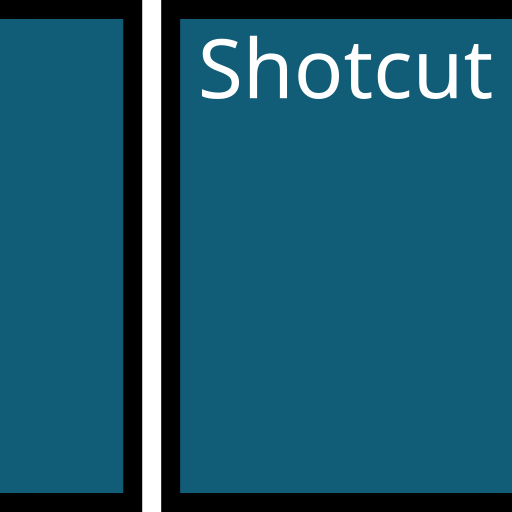These tools offer a cost-effective and accessible alternative to proprietary software. They provide most of the same features that can be found in a paid software. This makes them really important for video editing and content creation. In this article, we’ll explore the benefits of open-source video editors and highlight some of the best options available for content creators on platforms including Windows, Mac, and Linux.
Kdenlive
Kdenlive is a very popular open-source video editor that is available for Linux, Mac, and Windows. It comes with an intuitive user interface that provides useful features for both video and audio editing. It is a non-linear video editor which means that it allows you to manipulate multiple video and audio tracks simultaneously. The comprehensive audio editing suite provides features that allow you to edit the audio tracks in your video. Features like adjusting the volume, adding the audio effects, and syncing the audio with the video are just some of the things that you can do with this tool.
Kdenlive supports a wide range of media file formats including popular video formats like MP4, AVI, and MOV. The software also supports multi-camera editing which allows you to edit the videos that were recorded with multiple cameras. Furthermore, the functionality of the tool can be enhanced with the use of plugins. Kdenlive provides support for plugins and scripting which enables the users to access the added functionality like color grading, audio effects, and title animation.
Kdenlive has a strong community presence with multiple dedicated forums to help the users to handle the tasks that they come across. This means that there are regular updates that add new features to the tool to improve the overall usability of the tool.
OpenShot
OpenShot is another open source video editing tool that is available for all the major platforms including Windows, Mac and Linux. Like Kdenlive, this tool also comes with an easy-to-use and intuitive user interface that provides an array of features for the user to access. OpenShot supports keyframe animation which allows the users to create complex animations by adjusting the properties of an object over time.
OpenShot comes with some features that most open-source video editing tools do not provide. These include 3D animation and compositing which makes it easier to create professional-looking videos with multiple layers of 3D animated objects to bring life to any video. Other features include color correction, image stabilization, and chroma keying, all of which are really important to turn your videos into professional master pieces.
Apart from this, OpenShot supports a wide range of video and audio formats including HD and 4K video formats which makes it easy to work on this tool. Like Kdenlive, it also has a very active community of members who are willing to provide help and support should the need arise.
Shotcut
Shotcut is a video and audio editing tool that is available on Mac, Linux and Windows. It is an open source tool which means that you can use it for free. Being an open source tool, it has a strong community and has dedicated forums for help that are related to the features provided by this tool. Like many video editing tools, this tool has a user-friendly user interface that provides an array of useful features that make this tool a solid contender in this list.
Shotcut provides support for a wide range of video and audio formats including HD and 4K video formats. Like OpenShot, Shotcut also provides features like keyframe animation which allows you to create complex animations by adjusting the properties of an object over time, color correction, image stabilization, and chroma keying. These features come in handy when it comes to producing professional grade videos with solid audio enhancements.
Blender
Blender is a very popular open-source video and graphic designing tool. It supports the features that cannot be found in most paid video editing tools. The reason why Blender is so well-known and used is because it offers a support for the entire 3D pipeline including modeling, animation, rigging, rendering, simulation, compositing and motion tracking, even video editing and game creation. All of these features combined make this tool one of the best tools if your workflow requires work in the 3D space.
Primarily used for 3D modeling, Blender also provides support for classical video and audio editing. The features that are baked into this tool help the users create aesthetically pleasing and visually extraordinary videos with added functionality for many different user requirements. Some of the other use cases that Blender provides support for include architectural designs, sculpting, 2D animations and logo design.
As with most open-source projects, Blender has a very active community of members who are really helpful and who aid the continuing development and improvement of the tool. There are many forums for new and inexperienced users to help them navigate around the complex set of features that this tool provides.
Conclusion
Open-source video editors have proven to be a valuable alternative to proprietary video editing software, offering powerful features and flexibility while remaining free and open for customization. They have become a popular choice for amateur and professional video editors alike, offering an array of features that are on par with proprietary software. While some people may be hesitant to use the open-source video editors due to the perceived lack of support or the learning curve, there are vast communities of developers and users that provide support, tutorials, and help forums.




